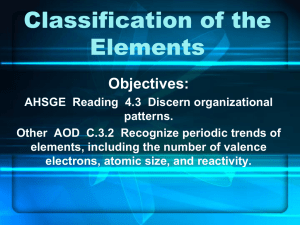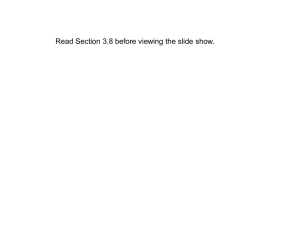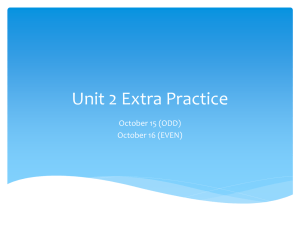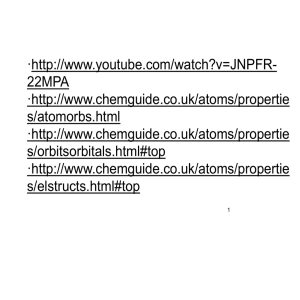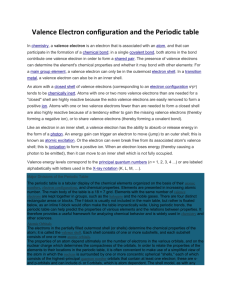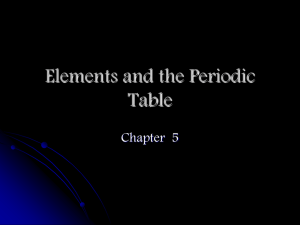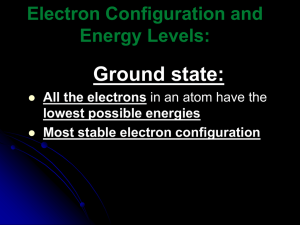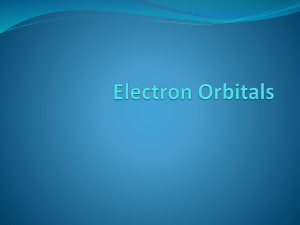Periodic Table: Element Classification by Electron Configuration
advertisement
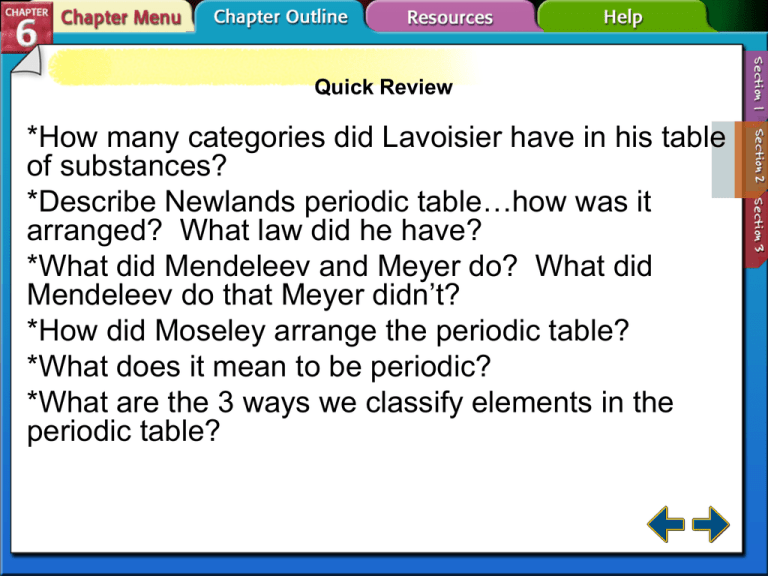
Quick Review *How many categories did Lavoisier have in his table of substances? *Describe Newlands periodic table…how was it arranged? What law did he have? *What did Mendeleev and Meyer do? What did Mendeleev do that Meyer didn’t? *How did Moseley arrange the periodic table? *What does it mean to be periodic? *What are the 3 ways we classify elements in the periodic table? Section 6.2 Classification of the Elements • Explain why elements in the same group have similar properties. • Identify the four blocks of the periodic table based on their electron configuration. valence electron: electron in an atom's outermost orbitals; determines the chemical properties of an atom Elements are organized into different blocks in the periodic table according to their electron configurations. Organizing the Elements by Electron Configuration • Recall electrons in the highest principal energy level are called valence electrons. • All group 1 elements have one valence electron. • All group 2 elements have two valence electrons. Organizing the Elements by Electron Configuration (cont.) • The energy level of an element’s valence electrons indicates the period on the periodic table in which it is found. For example, Zirconium (element 40) has an electron configuration of: [Kr] 5s24d2. Zirconium is the in 5th period and it’s valence electrons are in the 5th energy level Organizing the Elements by Electron Configuration (cont.) • The number of valence electrons for elements in groups 13-18 is ten less than their group number. • Helium is the exception to that as it has only 2 valence electrons. The s-, p-, d-, and f-Block Elements • The shape of the periodic table becomes clear if it is divided into blocks representing the atom’s energy sublevel being filled with valence electrons. • 4 different energy sublevels, so 4 different blocks. The s-, p-, d-, and f-Block Elements (cont.) • s-block elements consist of group 1 and 2, and the element helium. • Group 1 elements have a partially filled s orbital with one electron. • Group 2 elements have a completely filled s orbital with two electrons. The s-, p-, d-, and f-Block Elements (cont.) • After the s-orbital is filled, valence electrons occupy the p-orbital. • Groups 13-18 contain elements with completely or partially filled p orbitals. The s-, p-, d-, and f-Block Elements (cont.) • The d-block contains the transition metals and is the largest block. • There are exceptions, but d-block elements usually have filled outermost s orbital, and filled or partially filled d orbital. • The five d orbitals can hold 10 electrons, so the dblock spans ten groups on the periodic table. • Remember that the d orbital is always an energy level below the outermost energy level. • From before: Zirconium (element 40) has an electron configuration of: [Kr] 5s24d2. The s-, p-, d-, and f-Block Elements (cont.) • The f-block contains the inner transition metals. • f-block elements have filled or partially filled outermost s orbitals and filled or partially filled 4f and 5f orbitals. • The 7 f orbitals hold 14 electrons, and the inner transition metals span 14 groups. • Without using the periodic table, determine the group, period, and block of an atom with the following electron configuration: – [Ar]4s23d104p5 • Group = 17 • Period = 4 • Last block = p block Section 6.2 Assessment Which of the following is NOT one of the elemental blocks of the periodic table? A. s-block B. d-block D A 0% C D. f-block A. A B. B C. C 0% 0% 0% D. D B C. g-block Section 6.2 Assessment Which block spans 14 elemental groups? A. s-block B. p-block C. f-block D C A 0% B D. g-block A. A B. B C. C 0% 0% 0% D. D
